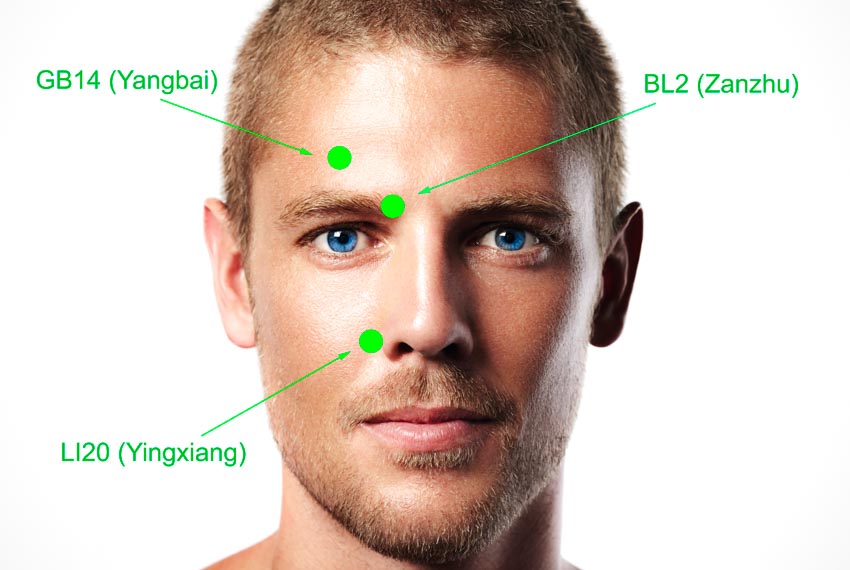
Acupuncture is effective for relieving symptoms and improving quality of life for patients with dry eye syndrome in menopausal and premenopausal age groups. Researchers from the Third People's Hospital of Nanning City conducted a clinical trial comparing the effects of an acupuncture plus moxibustion protocol with artificial tears for patients with dry eye syndrome (i.e., keratoconjunctivitis sicca, dry eye disease). Acupuncture yielded superior patient outcomes over patients using artificial tears. [1]
Based on the objective and subjective results of the investigation, further research is warranted to determine whether or not a combined protocol of acupuncture treatment plus the application of artificial tears (lubricating eye drops) yields even better results than either monotherapy. Based on the four-level symptom scoring system used in the study, acupuncture outperformed drug therapy with an efficacy rate of 77.5%.
The Schirmer I test (SIT) showed that acupuncture resulted in a more marked improvement from 4.33 ±0.52 to 8.64 ±0.85, while the drug control group experienced a smaller change from 4.60 ±0.67 to 5.01 ±0.31. Break-up time (BUT) and Fluorescent (FL) data were at the same level prior to the study. However, more significant improvements were observed in the acupuncture group after treatment. Estrogen (E2) increased more dramatically in the acupuncture group. Luteinizing hormone (LH) and follicle-stimulating hormone (FSH) were downregulated more considerably in the acupuncture group.
Dry eye disease (DED) is a multi-factorial ocular surface disease which leads to symptoms of ocular pain, discomfort, and decreased visual acuity. Menopausal and postmenopausal age groups are vulnerable to this condition, which is believed to be due to the changes in the balance of hormones. Based on TCM (traditional Chinese medicine) principles, this condition falls into the liver-kidney yin deficiency type. The global prevalence of DED in women has reached 40.0%, rising every year and affecting people at increasingly younger ages.
A total of 80 patients diagnosed with DED were randomly divided into the acupuncture group and the drug control group, with 40 cases in each group. The age range of the acupuncture group was 51.9 ±1.8 years and the duration of the condition was 14.5 ±0.9 months, while the age range of the drug group was 50.6 ±2.2 years and the duration of the condition was 12.0 ±1.3 months. There were no statistically significant differences between the two groups in terms of age and duration of condition.
Patients admitted into the study met at least two of the three criteria listed below:
- Symptoms of eye dryness, foreign body sensation, burning sensation, and visual fatigue
- Schirmer I test (SIT) ≤10 mm /5min
- Break-up time (BUT) ≤10s, Fluorescent (FL) shows positive
For the acupuncture group, needles were inserted into the following points after disinfection:
- BL1 (Jingming)
- BL2 (Zanzhu)
- ST2 (Sibai)
- GB20 (Fengchi)
- ST1 (Chengqi)
- GV20 (Shangxing)
- ST16 (Yanglao)
- BL18 (Ganshu)
- BL23 (Shenshu)
- SP6 (Sanyinjiao)
- KD3 (Taixi)
For facial points, 0.30 mm × 25 mm needles were applied transverse-obliquely followed by a gentle thrusting and twirling manipulation. For the rest of the acupoints, 0.30 mm × 40 mm needles were inserted perpendicularly or obliquely. A deqi sensation was achieved.
Needle retention time was 30 minutes, during which the needles were manipulated every 10 minutes. Upon removal of the needles, an ignited moxa stick was circled around patients’ foreheads and areas surrounding the eyes. The researchers note that a warming, but not burning, sensation is optimal. Slight redness of the skin might occur. Treatment course included 2 sessions. A total of 10 days completed one session and 2-day interval was between sessions.
For the drug control group, artificial tear drops (Tears Natural Ⅱ, Elkang Pharmaceutical, 170512) were administered four times a day for the same period as in the acupuncture group. The study shows that acupuncture integrated with moxibustion is an effective treatment protocol for dry eye syndrome in menopausal and premenopausal age groups.
Reference:
Wen Yong, Zeng Handong, Qin Zhiyong, Li Yanjing, Clinical Observation of Treating Dry Eye Syndrome in Menopause and Perimenopausal Age Groups with Jingluo Zangfu Acupuncture, Chinese Journal of Ethnomedicine and Ethnopharmacy,Vol. 27,No. 3.


